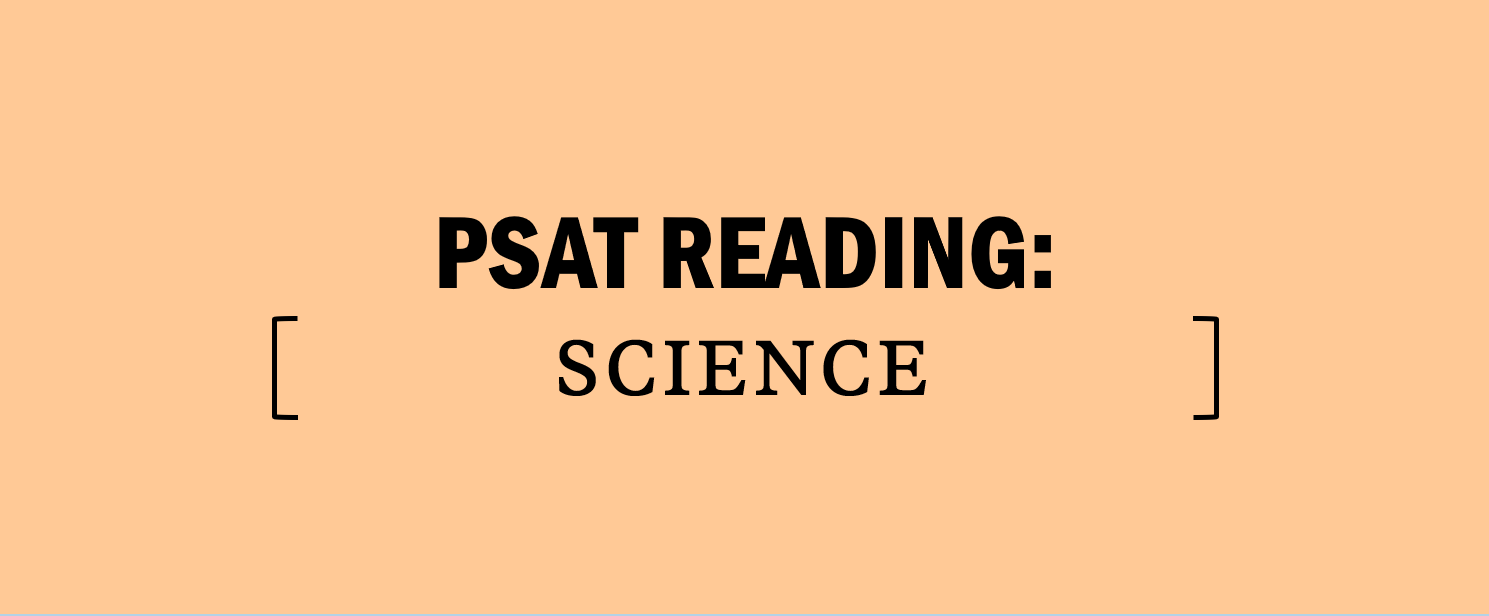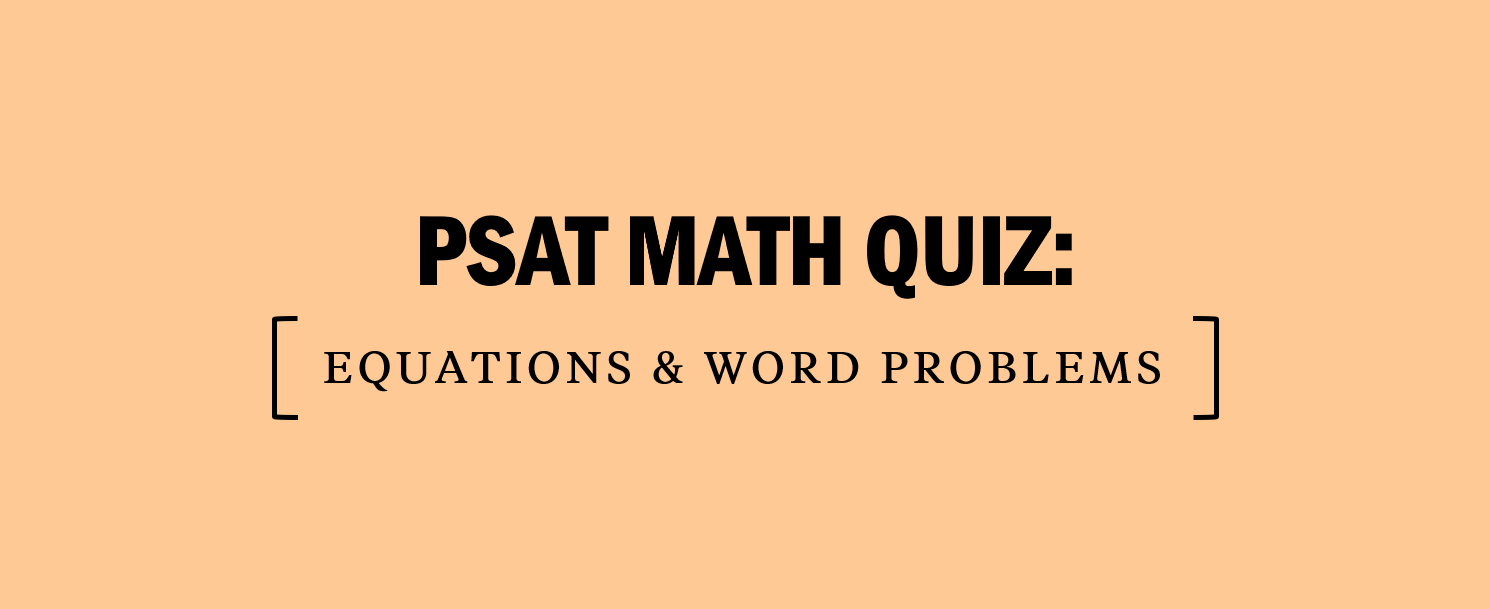PSAT Math: Systems of Equations
Linear Equations on the PSAT are well suited for modeling a variety of scenarios and for solving for a single variable in terms of another that is clearly defined (e.g., what is the cost of a data plan if you consume 4 GB of data in a month). However, sometimes you will be given a set of multiple equations with multiple variables that are interdependent. For example, suppose a $50/month cell phone plan includes $0.05 text messages and $0.40 voice calls, with a cap of 1,000 combined text messages and voice calls.
This scenario can be represented by the following system of equations:
$0.05t + $0.40v = $50
t + v = 1000
Solving such a system would enable you to determine the maximum number of text messages and voice calls you could make under this plan, while optimizing total usage. To solve systems of equations, you’ll need to rely on a different set of tools that builds on the algebra you’re already familiar with. The following question shows an example of such a system in the context of a test-like question.
You might be tempted to switch on math autopilot at this point and employ substitution, solving the second equation for s in terms of r:
s = 12 – r
You could plug the resulting expression back into the other equation and eventually solve for r, but remember, the PSAT tests your ability to solve math problems in the most efficient way.
Thinking Strategically about Systems of Equations on the PSAT:
The following table contains some strategic thinking designed to help you find the most efficient way to solve this problem on Test Day, along with some suggested scratchwork.
| Strategic Thinking | Math Scratchwork |
|
Step 1: Read the question, identifying and organizing important information as you go In this case, you’re looking for the value of r. There are two equations that involve r and s. |
3r + 2s = 24
r + s = 12 |
|
Step 2: Choose the best strategy to answer the question Is there any way you can make the first equation look like the second one? Does the quantity r + s exist in the first equation in some form?How can you effectively use both equations?Once you’ve written the first equation in terms of r + s, substitute the value of r + s (which is 12) into the second equation and solve for r. |
3r + 2s = 24
r + 2r + 2s = 24 r + 2(r + s) = 24 r + 2(12) = 24 r = 0 |
|
Step 3: Check that you answered the right question Be careful! The question isn’t asking for the value of r. Add 6 to your result and you should see that (C) is the correct answer. |
r + 6 = 0 + 6
r + 6 = 6 |
PSAT Systems of Equations
A system of two linear equations simply refers to the equations of two lines. “Solving” a system of two linear equations usually means finding the point where the two lines intersect.
There are multiple ways to solve a system of linear equations. For some PSAT questions, substitution is fastest; for others, combination is fastest. There is also the possibility of using the test’s built-in graphing calculator, although this can sometimes be more time consuming. Let’s take a look at both:
PSAT System of Equations: Substitution
To solve a system of two linear equations by substitution, do the following:
• Isolate a variable (ideally, one whose coefficient is 1) in one of the equations.
• Substitute the result into the other equation.
Let’s examine a sample problem to investigate the requirements for solving a system of equations:
Explanation:
Isolate x in the second equation, then substitute the result into the first equation:
x = 20 − y
5(20 − y) + 3y = 20
100 − 5y + 3y = 20
− 2y = − 80
y = 40
Thus, (D) is correct. If you needed to know the value of x as well, you could now substitute 40 for y into either equation to find that x = −20.
PSAT Systems of Equations: Combination
Combining two equations means adding or subtracting them. Most often the goal is to eliminate one of the variables, hence this is also known as elimination, but this technique can also be used to solve for a combination of variables (e.g., 5m + 7n).
To solve a system of two linear equations by combination, do the following:
- Make sure that the coefficients for one variable have the same absolute value. (If they don’t, multiply one equation by an appropriate constant. Sometimes, you’ll want to multiply both equations by constants.)
- Either add or subtract the equations to eliminate one variable.
- Solve for the remaining variable, then substitute its value into either equation to solve for the variable you eliminated in the preceding step.
Let’s look at another practice question and use combination to solve:
Explanation:
Both variables have different coefficients in the two equations, but you can convert the 3x in the second equation to 6x by multiplying the entire second equation by 2:
2(3x + 3y = − 6)
6x + 6y = − 12
Now that the coefficients for one variable are the same, subtract the second equation from the first to eliminate the x variable. (Note that if the x-coefficients were 6 and −6, you would add the equations instead of subtracting.)
6x − 5y = 21
− (6x + 6y = − 12)
0x − 11y = 33
Solve this equation for y:
–11y = 33
y = –3
(A) is the correct answer. If the question asked for x as well, you would now substitute −3 for y in either of the original equations and solve for x. (For the record, x = 1.)
On PSAT Test Day
Many PSAT Math questions can be solved in more than one way. A little efficiency goes a long way in helping you get through the Math sections on time, so it’s useful to try solving problems more than one way to learn which way is fastest.







